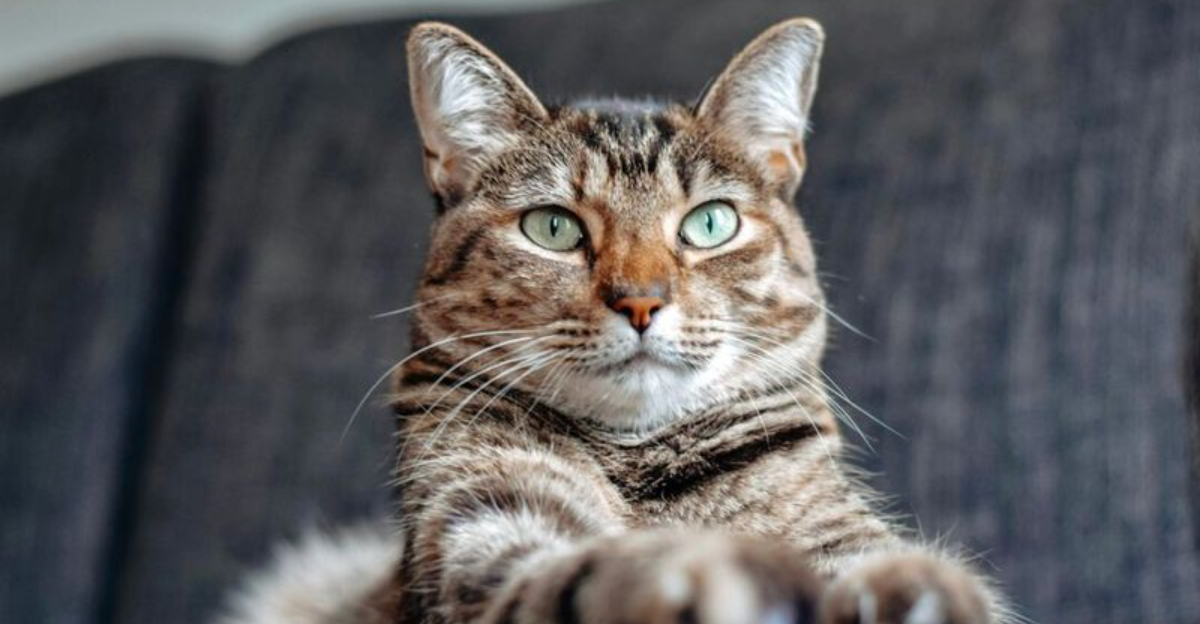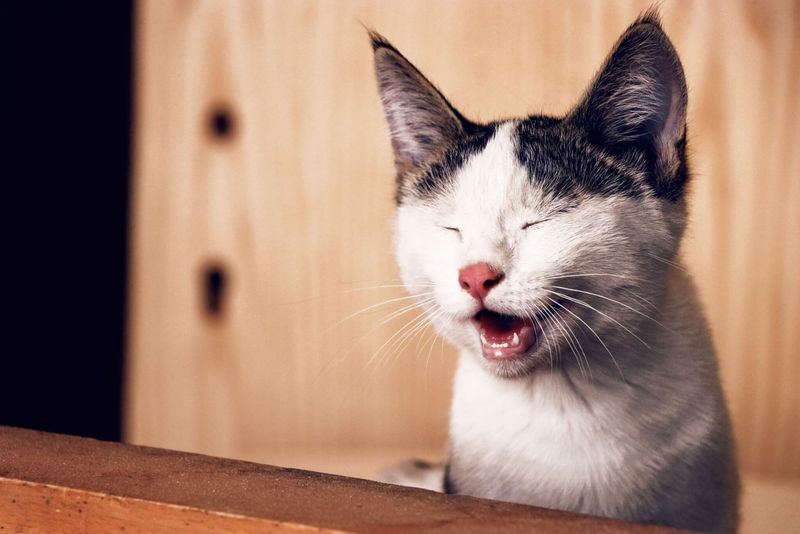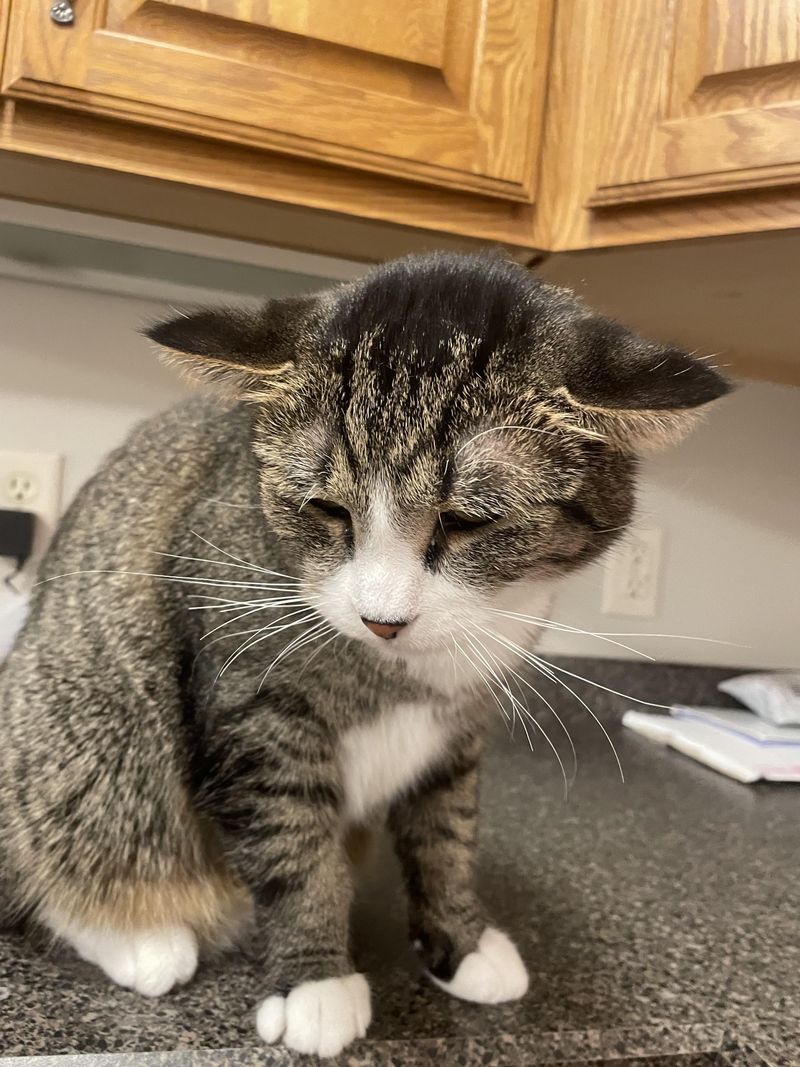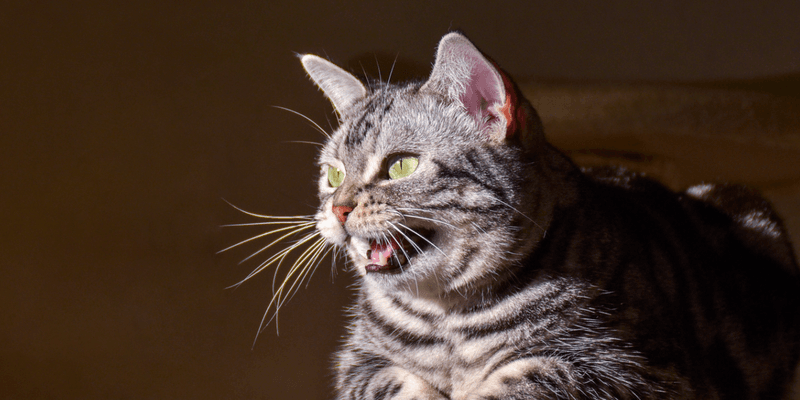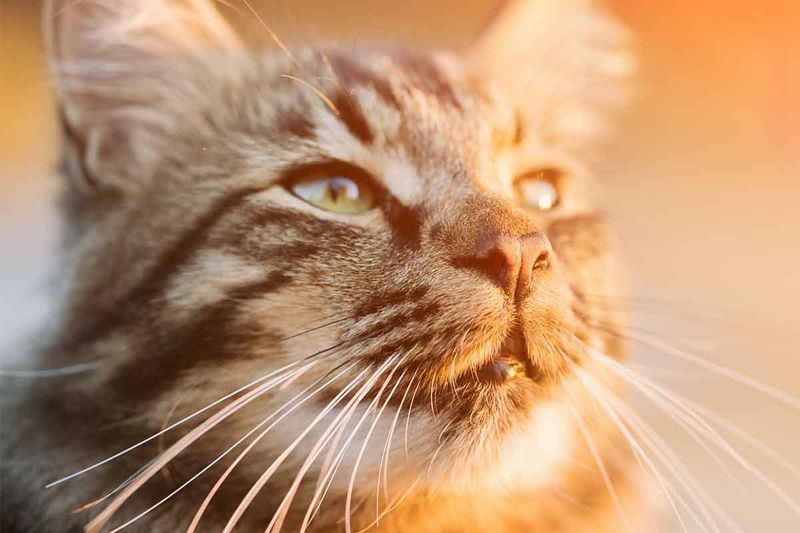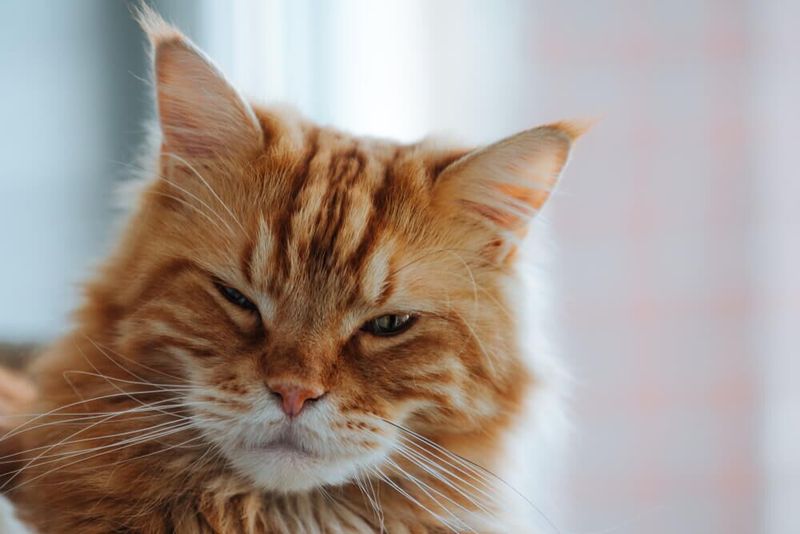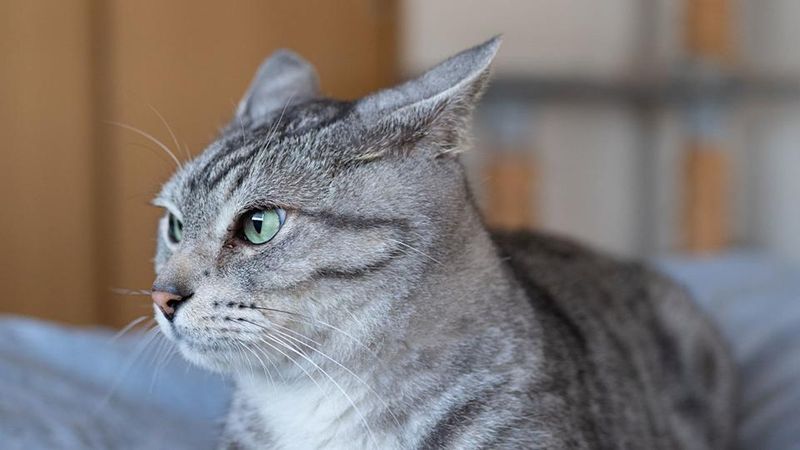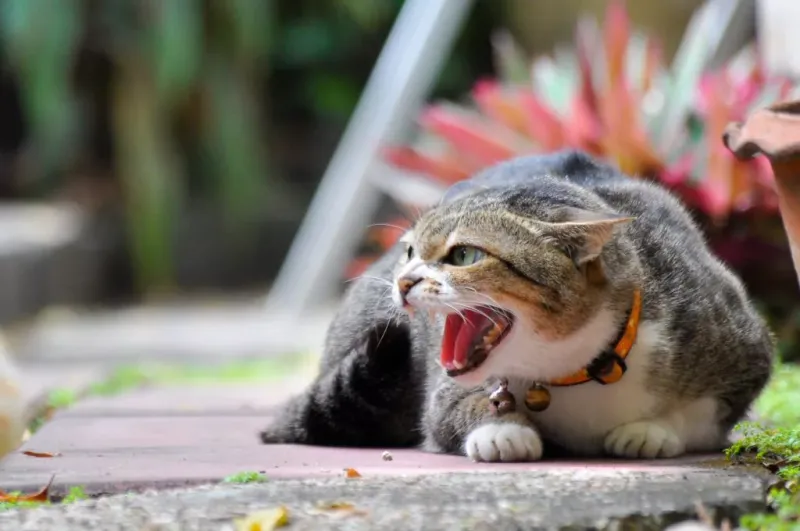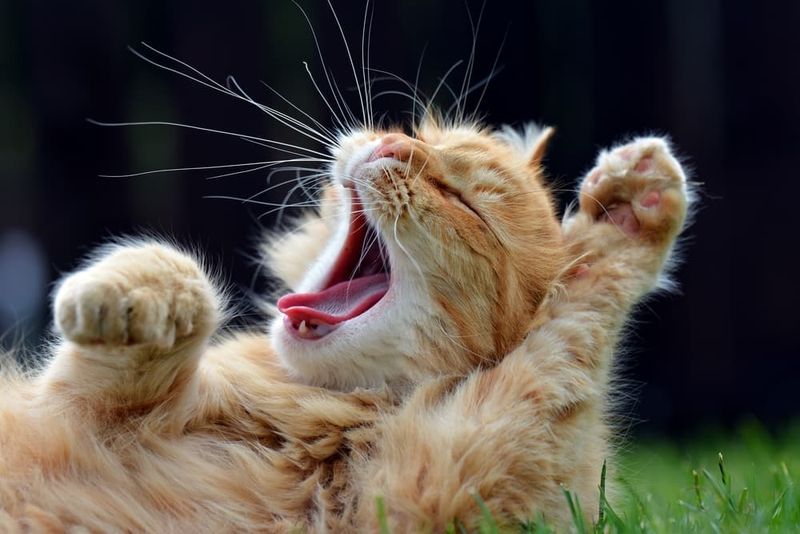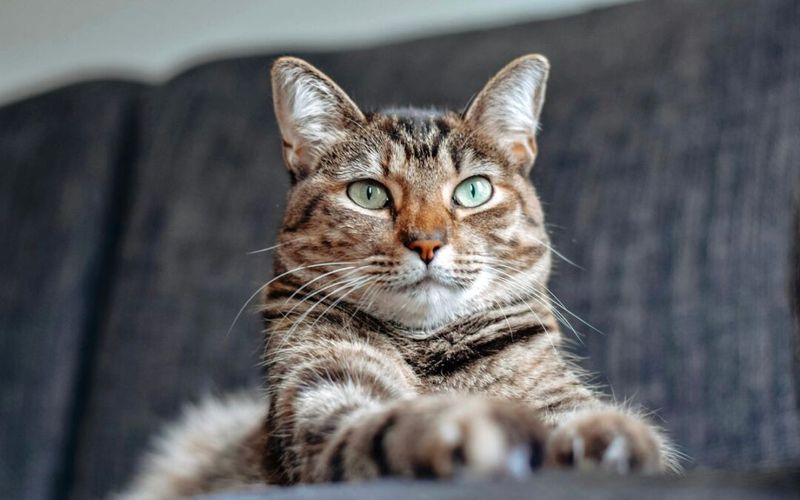📖 Table of Content:
Cats often appear mysterious, but their faces reveal a rich language of emotions and intentions. Researchers have discovered that cats can make as many as 276 distinct facial expressions. Each expression communicates a unique message about their feelings or needs.
Decoding these subtle signals offers valuable insight into a cat’s inner world. Recognizing key expressions helps in interpreting their moods and responding appropriately. This deeper understanding fosters a stronger connection between cats and their humans.
Though mastering all facial cues can be overwhelming, focusing on the most common expressions is a great start. These expressions serve as windows into what a cat experiences and desires. Learning to read them enhances communication and enriches the feline-human relationship.
1. The Slow Blink of Trust
Cat owners cherish this expression above all others. When your cat looks at you with relaxed eyes and delivers a slow, deliberate blink, they’re sending you a kitty kiss. This expression signals complete comfort and trust in your presence.
Feline behaviorists confirm this gesture is reserved for those your cat considers family. The slow blink creates a vulnerability moment – cats wouldn’t close their eyes around someone they fear.
Try returning this expression when your cat offers it. Mimic the slow blink back, and you’re essentially speaking cat language, telling them, “I trust you too.” It’s one of the few expressions you can successfully return!
2. Ears Flattened in Fear
Flattened ears against the head serve as a universal warning sign in the feline world. When your cat’s ears disappear into their fur, their body has switched into defense mode. This expression combines with dilated pupils and often a lowered body posture.
The evolutionary purpose makes perfect sense – flattened ears protect these sensitive organs during potential fights. Your normally confident cat becomes a bundle of alertness, ready to flee or fight if necessary.
Respecting this expression means giving your cat space rather than trying to comfort them with touch. Allow them to retreat to a safe spot until their ears return to their normal, upright, relaxed position.
3. The Chattering Jaw
The distinctive chattering expression fascinates even veteran cat owners. Your cat sits by the window, spots a bird, and suddenly their jaw begins rapidly vibrating while making a peculiar clicking sound. Their eyes fixate intensely on the prey they can’t reach.
Theories about this expression range from frustration to an instinctive neck-bite reflex. The chattering mimics the motion cats use to break prey’s necks in the wild, triggered even when glass separates them from birds.
Watching your cat chatter provides a glimpse into their predatory nature that persists despite thousands of years of domestication. This expression reminds us that beneath the cuddly exterior beats the heart of a skilled hunter.
4. The Whisker Forward Greeting
When your cat approaches with whiskers pushed forward and slightly spread, they’re expressing friendly curiosity. Those impressive sensory tools – each whisker connected to sensitive nerve endings – move forward to gather maximum information about you or their environment.
Forward whiskers paired with upright ears and a tall tail signal a confident, happy cat ready for interaction. This expression often appears when you return home or enter a room where your cat is resting.
Many cat owners miss this subtle greeting, focusing instead on vocalizations. Yet this whisker position reveals genuine feline enthusiasm far more reliably than meows, which cats primarily developed to communicate with humans rather than other cats.
5. The Narrowed Eye Glare
Few expressions communicate feline displeasure more clearly than narrowed eyes fixed in a penetrating stare. Unlike the relaxed slow blink, this expression features tense facial muscles and often accompanies a stiffened body posture. The intensity feels almost palpable.
Cats deploy this expression as a warning before escalating to more aggressive behaviors. The narrowed eyes protect vulnerable eyes while preparing for potential conflict, allowing them to maintain visual contact with the perceived threat.
Receiving this look from your cat requires immediate assessment of what might be causing their irritation. Have you violated their space? Changed their routine? Introduced a new scent? Addressing the underlying cause quickly can prevent the situation from deteriorating.
6. The Airplane Ear Warning
Airplane ears – when your cat’s ears rotate outward like airplane wings – signal mounting irritation or anxiety. This distinctive expression falls between fully upright ears (contentment) and completely flattened ears (fear/aggression), serving as an important transitional warning.
The partial flattening prepares ears for protection while still maintaining auditory awareness. Accompanying facial cues include slightly dilated pupils and tense whiskers pulled back against the face.
Smart cat owners recognize this expression as a crucial moment for intervention. Removing stressors or giving your cat space when you spot airplane ears can prevent escalation to aggressive behavior. This expression essentially represents your cat saying, “I’m uncomfortable and my patience is wearing thin.”
7. The Whisker-Back Aggression
When a cat pulls their whiskers tightly back against their cheeks, they’re displaying one of their most aggressive facial expressions. This dramatic change serves a practical purpose – removing sensitive whiskers from potential damage during conflict while creating a streamlined profile.
Combined with dilated pupils, flattened ears, and often an open mouth showing teeth, this expression leaves no doubt about your cat’s emotional state. Every muscle in their face tenses in preparation for fight rather than flight.
Seeing this full aggression face means immediate action is needed to ensure safety. Never attempt to pick up or soothe a cat displaying this expression. Instead, remove yourself or other pets from the situation and give your cat ample time to calm down naturally.
8. The Yawning Submission
Cat yawns go beyond simple tiredness. When your cat yawns while making direct eye contact with you, they’re displaying a complex expression that communicates non-threatening intentions. The wide-open mouth paradoxically signals vulnerability and relaxation in your presence.
Behaviorists note this expression often appears during tense standoffs between cats or when your pet feels slight social pressure. The yawn works as a stress reliever and visual signal that they aren’t seeking conflict.
Interestingly, this expression can be contagious between bonded cats and their humans. When your cat yawns while looking at you, you might find yourself yawning back – a small but meaningful example of the emotional connection between species that neurologists continue to study.
9. The Whisker Puff of Excitement
During moments of heightened excitement, cats display a distinctive expression where their whiskers spread wide and puff outward. This maximizes their sensory field, allowing them to capture every bit of information about whatever has captured their attention.
Accompanying this whisker position are widely dilated pupils, forward-facing ears, and often a slightly open mouth. The entire face transforms into a sensory collection device, processing everything about the exciting stimulus.
You’ll spot this expression when your cat engages with favorite toys, spots potential prey, or anticipates a special treat. Unlike fear expressions, the whisker puff comes with body language that shows readiness for play or hunting rather than retreat. It’s essentially your cat’s “game on” face.
